After a long day of running around in heels or being on my feet all day, I can’t think of anything better than a relaxing foot soak. Let me share with you my favorite Epsom salt foot soak recipe that has become my go-to solution for tired, achy feet.
Trust me, once you try these simple DIY foot soak recipes, you’ll wonder why you haven’t been doing this sooner!
Table of Contents
Why Epsom Salt is Perfect for Foot Soaks
Epsom salt, also known as magnesium sulfate, isn’t just your average bath salt. This mineral compound is known to relieve pain and inflammation, specifically for your feet.
I discovered the magic of Epsom salt foot soaks when I was dealing with constant foot pain from wearing heels every day. The magnesium in Epsom salt gets absorbed through your skin, helping to reduce swelling and ease muscle tension.
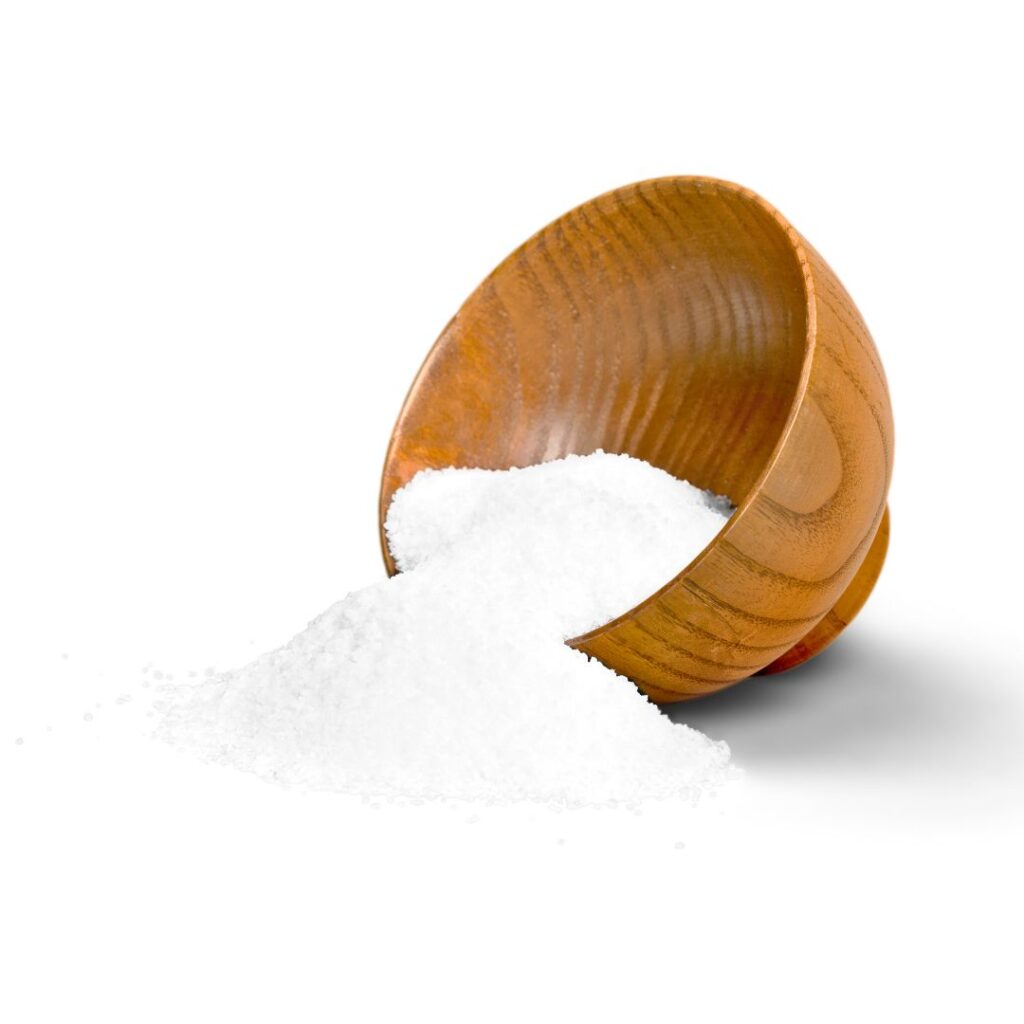
What makes Epsom salt so special for our feet is its ability to:
- Draw out toxins from tired muscles
- Reduce inflammation and swelling
- Soften rough, dry skin
- Provide natural pain relief
- Help you relax after a stressful day
How to Choose the Right Epsom Salt for Your Foot Soak
Not all Epsom salts are created equal. When I’m shopping for the perfect salt for my homemade foot soak, I look for:
Pure, pharmaceutical-grade Epsom salt works best. Avoid scented versions if you plan to add your own essential oils. I always check that the package says “USP grade” – this means it meets the highest purity standards.
You can find quality Epsom salt at any pharmacy, grocery store, or online. I usually buy the plain variety in bulk because I use it so often for my foot care routine.
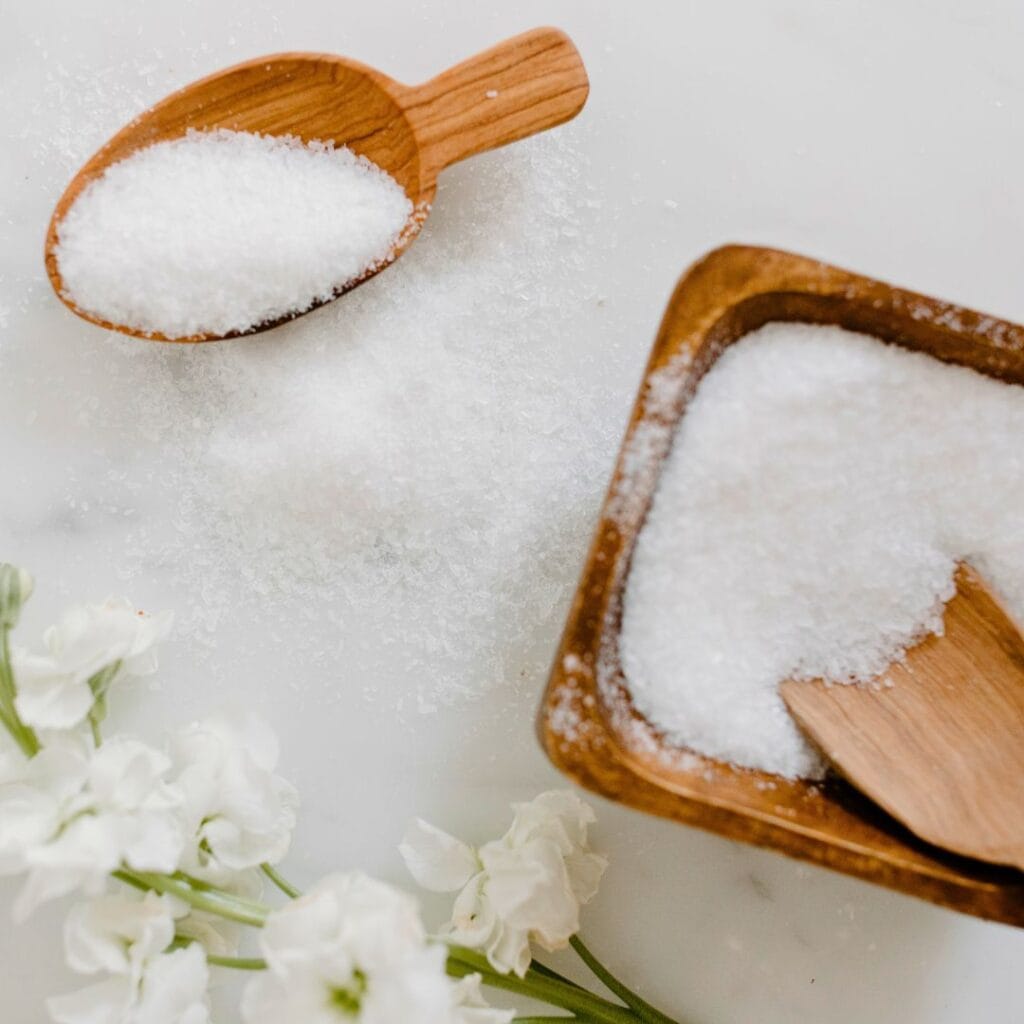
Essential Ingredients for the Perfect Epsom Salt Foot Soak Recipe
Here’s what you’ll need for my basic DIY Epsom salt foot soak:
Basic Recipe:
- 1/2 cup Epsom salt
- Warm water (enough to cover your feet)
- A large bowl or foot basin
- Clean towel
Enhanced Recipe (my personal favorite):
- 1/2 cup Epsom salt
- 2-3 drops of lavender essential oil
- 1 tablespoon carrier oil (like coconut or olive oil)
- Warm water
- Optional: 1/4 cup baking soda for extra softening
The essential oils not only smell amazing but also provide additional benefits. You can learn more about creating perfect essential oil blends for your foot soaks.
Step-by-Step Foot Soak Method
Let me walk you through my favorite foot soak routine:
Step 1: Prepare Your Space Set up a comfortable chair where you can relax. I like to have a good book or my phone nearby because I’ll be soaking for 15-20 minutes.
Step 2: Fill Your Basin Add warm water to your foot basin – it should be comfortably warm, not hot. The water should cover your feet completely.
**Step 3: Add the Epsom Salt Slowly add your Epsom salt to the warm water. I stir it gently with my hand to help it dissolve faster.
Step 4: Add Essential Oils If you’re using essential oils, add them now. I love lavender for relaxation or peppermint for an energizing soak. Check out our guide on essential oils for sleep if you want to use your foot soak as part of your nighttime routine.
Step 5: Soak and Relax Soak your feet for 15-20 minutes. This is your time to unwind and let the Epsom salt work its magic.
Step 6: Rinse and Dry After soaking, rinse your feet with clean water and pat dry with a soft towel. Don’t forget to moisturize afterward!
Amazing Benefits of Epsom Salt Foot Soaks
I’ve been doing regular foot soaks for over two years now, and the benefits are incredible:
Pain Relief: This simple remedy can ease tired feet, reduce swelling, and promote wellness. After wearing heels all day, my feet feel so much better after a good soak.
Improved Circulation: The warm water combined with Epsom salt helps improve blood flow to your feet. I notice my feet feel less cold and tingly after regular soaks.
Softer Skin: The salt naturally exfoliates dead skin cells, leaving your feet softer and smoother. It’s like a mini pedicure at home!
Stress Relief: There’s something so calming about soaking your feet. It’s my favorite way to transition from a busy day to relaxation mode.
Better Sleep: I often soak my feet before bedtime. The relaxation helps me sleep better, especially when I add calming essential oils.
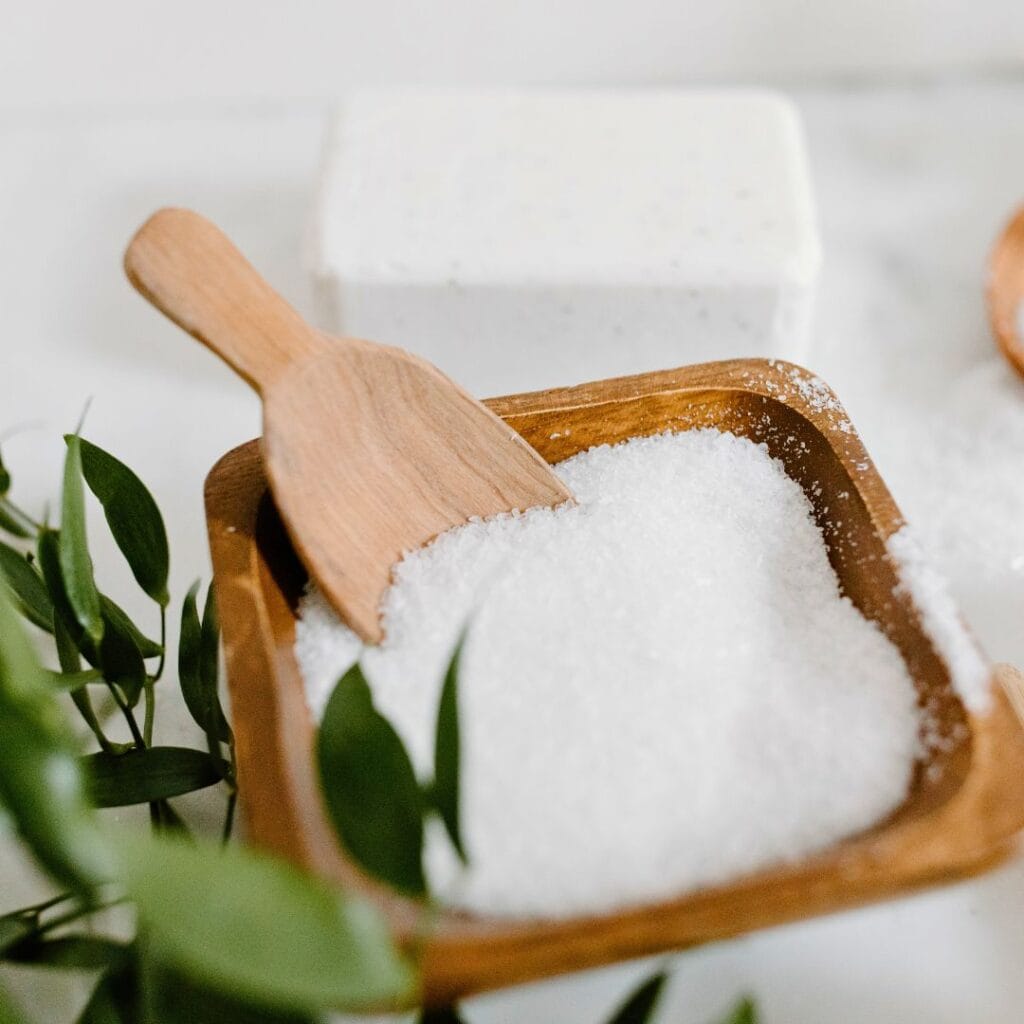
Important Foot Soak Precautions
While Epsom salt foot soaks are generally safe, there are a few things to keep in mind:
Don’t soak if you have:
- Open wounds or cuts on your feet
- Severe diabetes (check with your doctor first)
- Very sensitive skin
Water temperature matters. The water should be warm, not hot. Hot water can cause burns or make swelling worse.
Time limits are important. Don’t soak for more than 20 minutes. Longer soaking can actually dry out your skin.
Moisturize afterward. Always apply a good foot cream after your soak to lock in hydration.
6 DIY Foot Soak Recipes to Try
Beyond Epsom salt, I love experimenting with different homemade foot soak recipes:
1. Relaxing Lavender Foot Soak
- 1/2 cup Epsom salt
- 3 drops lavender essential oil
- 1 tablespoon dried lavender buds
- Warm water
Perfect for evening relaxation. The lavender scent helps calm your mind while the Epsom salt soothes your feet.
2. Energizing Peppermint Foot Soak
- 1/2 cup Epsom salt
- 2 drops peppermint essential oil
- 1 tablespoon coconut oil
- Warm water
Great for morning energy or after a workout. Peppermint naturally cools and refreshes tired feet. Learn more about peppermint oil benefits in our other articles.
3. Moisturizing Honey and Oats Foot Soak
- 1/4 cup Epsom salt
- 2 tablespoons honey
- 1/4 cup ground oats
- Warm water
This recipe is amazing for dry, cracked heels. The honey moisturizes while oats gently exfoliate.
4. Detox Green Tea Foot Soak
- 1/2 cup Epsom salt
- 2 green tea bags
- 1 tablespoon apple cider vinegar
- Warm water
Steep the tea bags in hot water first, then add to your foot basin. Green tea has antioxidants that help rejuvenate tired skin.
5. Anti-Fungal Tea Tree Foot Soak
- 1/2 cup Epsom salt
- 3 drops tea tree oil
- 1 tablespoon carrier oil
- Warm water
Perfect if you’re dealing with an athlete’s foot or want to prevent fungal infections. Tea tree oil has natural antifungal properties.
6. Citrus Fresh Foot Soak
- 1/2 cup Epsom salt
- Juice of 1/2 lemon
- 2 drops orange essential oil
- Warm water
This energizing soak brightens your mood and helps remove dead skin naturally. The citrus scent is so refreshing!

Advanced Foot Care Tips
To get the most out of your foot soak routine, I recommend:
Create a relaxing environment. Dim the lights, play soft music, and make this your special self-care time.
Use a pumice stone afterward. While your skin is soft from soaking, gently remove calluses with a pumice stone.
Follow up with a massage. After your soak, massage your feet with a rich foot cream or oil. You can even use some of the carrier oils we discuss in our beauty guides.
Make it regular. I do foot soaks 2-3 times per week for the best results. Consistency is key!
Add aromatherapy. Different scents can change your whole mood. Try our room spray with essential oils to enhance your spa experience.
When to Do Your Epsom Salt Foot Soak
I’ve found the best times for foot soaks are:
Evening routine: Perfect for winding down after a long day. The relaxation helps prepare your body for sleep.
Weekend self-care: Make it part of your Sunday self-care routine along with face masks and other pampering treatments.
After exercise: Great for soothing sore muscles and reducing inflammation after workouts.
When feeling stressed: The combination of warm water and Epsom salt naturally calms your nervous system.
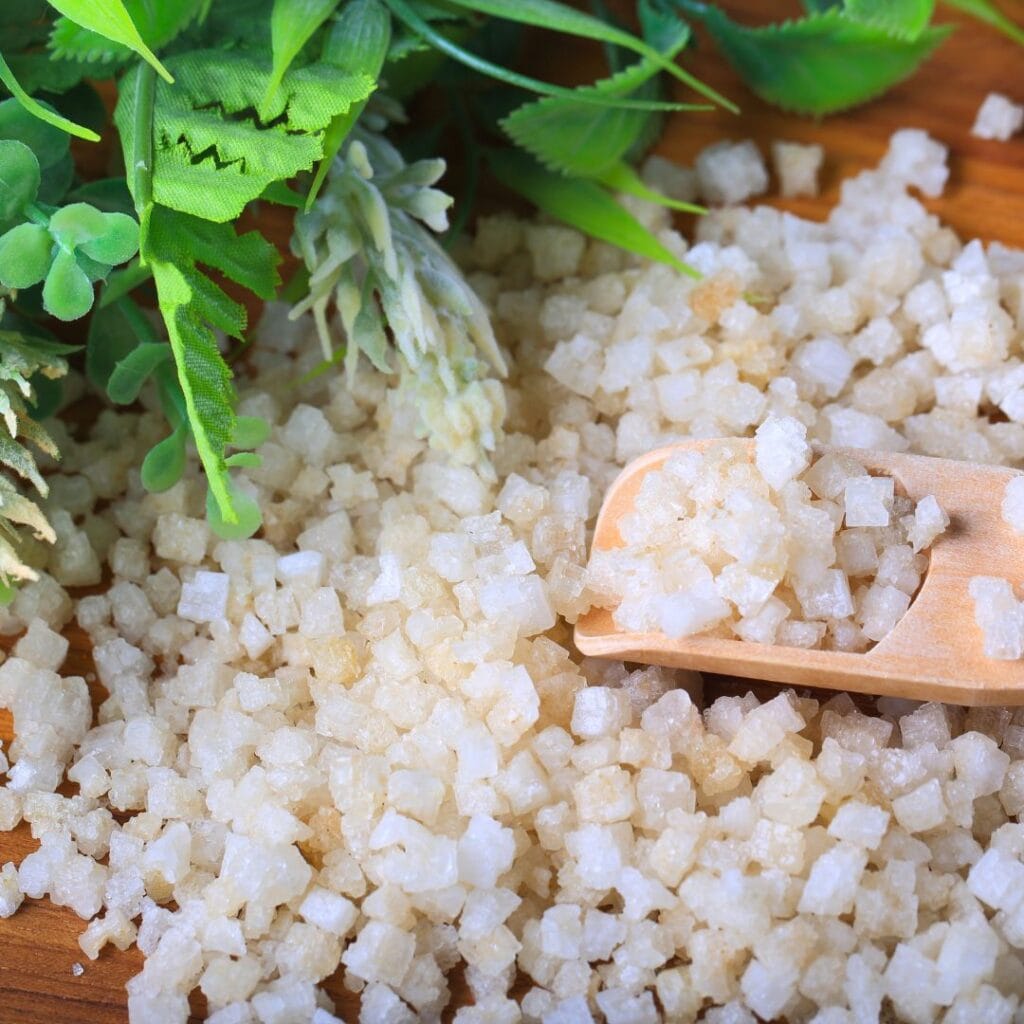
DIY Foot Soak Variations for Different Needs
Depending on what your feet need, you can customize your homemade foot soak:
For dry feet: Add extra moisturizing ingredients like coconut oil or shea butter.
For sore muscles: Use cool water with Epsom salt and peppermint oil for a refreshing, pain-relieving soak.
For better circulation: Alternate between warm and cool water soaks to stimulate blood flow.
For relaxation: Add chamomile tea bags or lavender essential oil for maximum calming effects.
Budget-Friendly Foot Care at Home
One thing I love about DIY foot soaks is how affordable they are compared to spa treatments. A bag of Epsom salt costs under $5 and gives you dozens of foot soaks!
You can also repurpose ingredients from your kitchen. Baking soda, honey, and oats all make great additions to homemade foot soaks.
If you’re dealing with specific issues like mosquito bites on your feet during summer, check out our guide on essential oils for mosquito bites for natural relief.
Making Your Foot Soak Routine Special
I like to make my foot soak time feel extra special by:
- Using a beautiful ceramic bowl instead of a plastic basin
- Adding flower petals to the water
- Lighting candles for ambiance
- Preparing a healthy snack and herbal tea
- Playing relaxing music or nature sounds
Remember, this is your time to relax and pamper yourself. Make it as luxurious as you want!
Seasonal Foot Soak Variations
I love changing up my foot soak recipes based on the season:
Spring: Add fresh mint leaves and lemon for an energizing, fresh start to the season.
Summer: Cool peppermint and eucalyptus help refresh hot, tired feet.
Fall: Warm spices like cinnamon and cloves create a cozy, comforting soak.
Winter: Extra moisturizing ingredients like oats and honey help combat dry winter skin.

FAQs About Epsom Salt Foot Soak Recipe
How often should I do an Epsom salt foot soak?
I recommend 2-3 times per week for best results. Daily soaking might dry out your skin, so it’s better to space them out and always moisturize afterward.
Can I reuse Epsom salt water?
No, you should use fresh water and Epsom salt each time. The salt dissolves and loses its effectiveness, plus bacteria can grow in used water.
How much Epsom salt should I use per foot soak?
For most foot basins, 1/2 cup of Epsom salt is perfect. If you have a larger basin, you can use up to 3/4 cup, but don’t go overboard.
Can I add regular table salt instead of Epsom salt?
Epsom salt is different from table salt. It contains magnesium sulfate, which provides the therapeutic benefits. Table salt won’t give you the same results.
What’s the ideal water temperature for foot soaks?
Warm water that feels comfortable to the touch is best – around 98-100°F. Hot water can cause burns or increase swelling.
Can I do Epsom salt foot soaks if I’m pregnant?
Generally yes, but check with your doctor first, especially if you have any pregnancy complications or swelling issues.
Why do my feet tingle during the soak?
A slight tingling sensation is normal as circulation improves. If it’s uncomfortable or painful, the water might be too hot, or you might be sensitive to the Epsom salt.
Can children use Epsom salt foot soaks?
Yes, but use less salt (about 1/4 cup) and make sure the water isn’t too hot. Always supervise children during foot soaks.
Should I rinse my feet after an Epsom salt soak?
Yes, always rinse with clean water and pat dry. This removes any salt residue that could dry out your skin, then apply moisturizer.
Conclusion
Epsom salt foot soaks have truly changed my self-care routine. What started as a simple way to soothe tired feet has become my favorite form of at-home pampering.
The best part about these DIY foot soak recipes is how customizable they are. You can keep it simple with just Epsom salt and water, or create elaborate spa-like experiences with essential oils and other natural ingredients.
I encourage you to start with the basic Epsom salt foot soak recipe and then experiment with different additions based on what your feet need. Whether you’re dealing with soreness from a long day, dry skin, or just want to relax, there’s a perfect foot soak combination waiting for you.
Remember to be consistent with your foot care routine. Your feet carry you through every day – they deserve a little extra love and attention. Try incorporating Epsom salt foot soaks into your weekly routine, and I promise you’ll notice the difference in how your feet look and feel.
Start tonight with a simple soak, and let me know in the comments which recipe becomes your favorite. Happy soaking, beautiful!
For more natural beauty and wellness tips, explore our other guides on essential oils for hay fever, homemade vapor rub, and lemongrass oil benefits for skin.
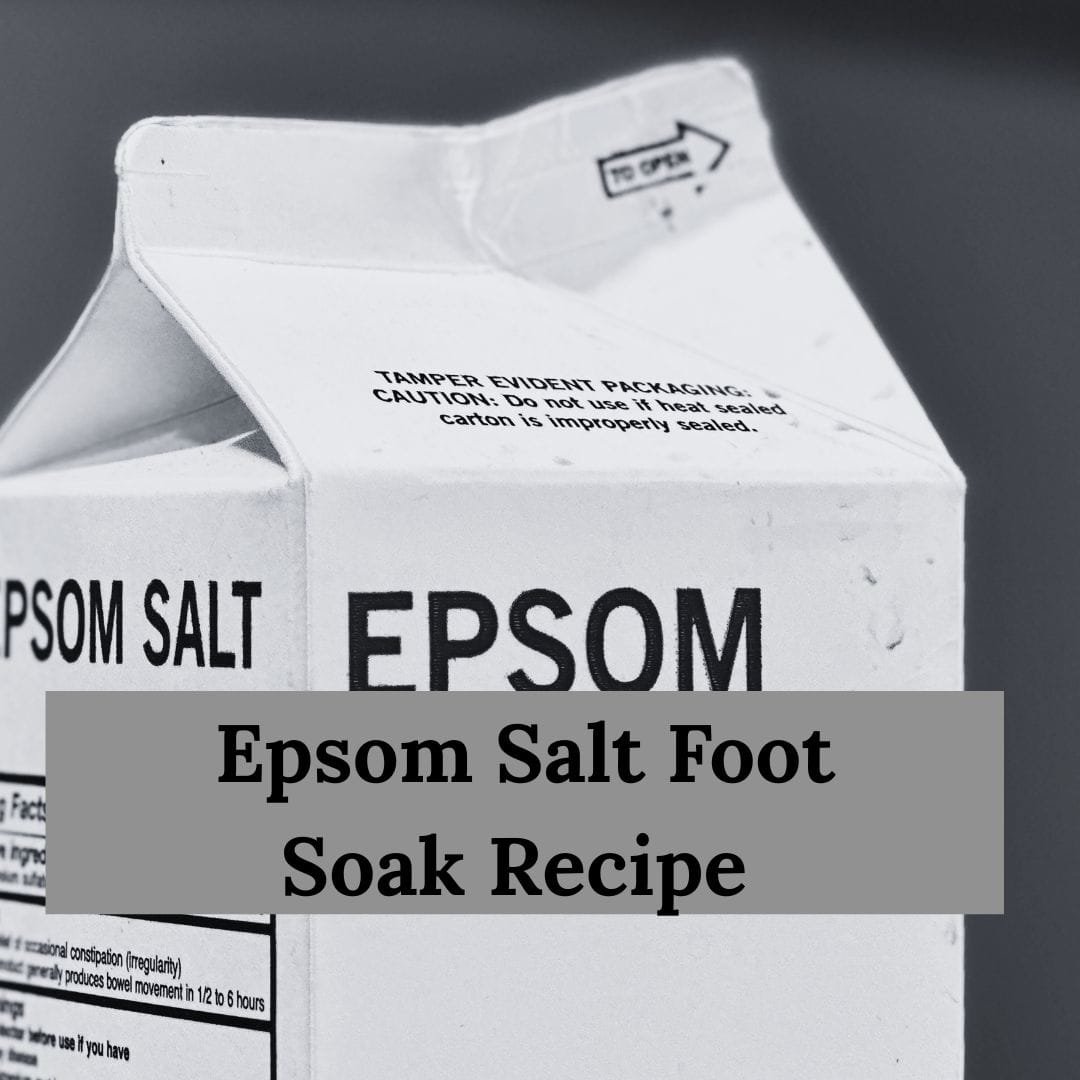


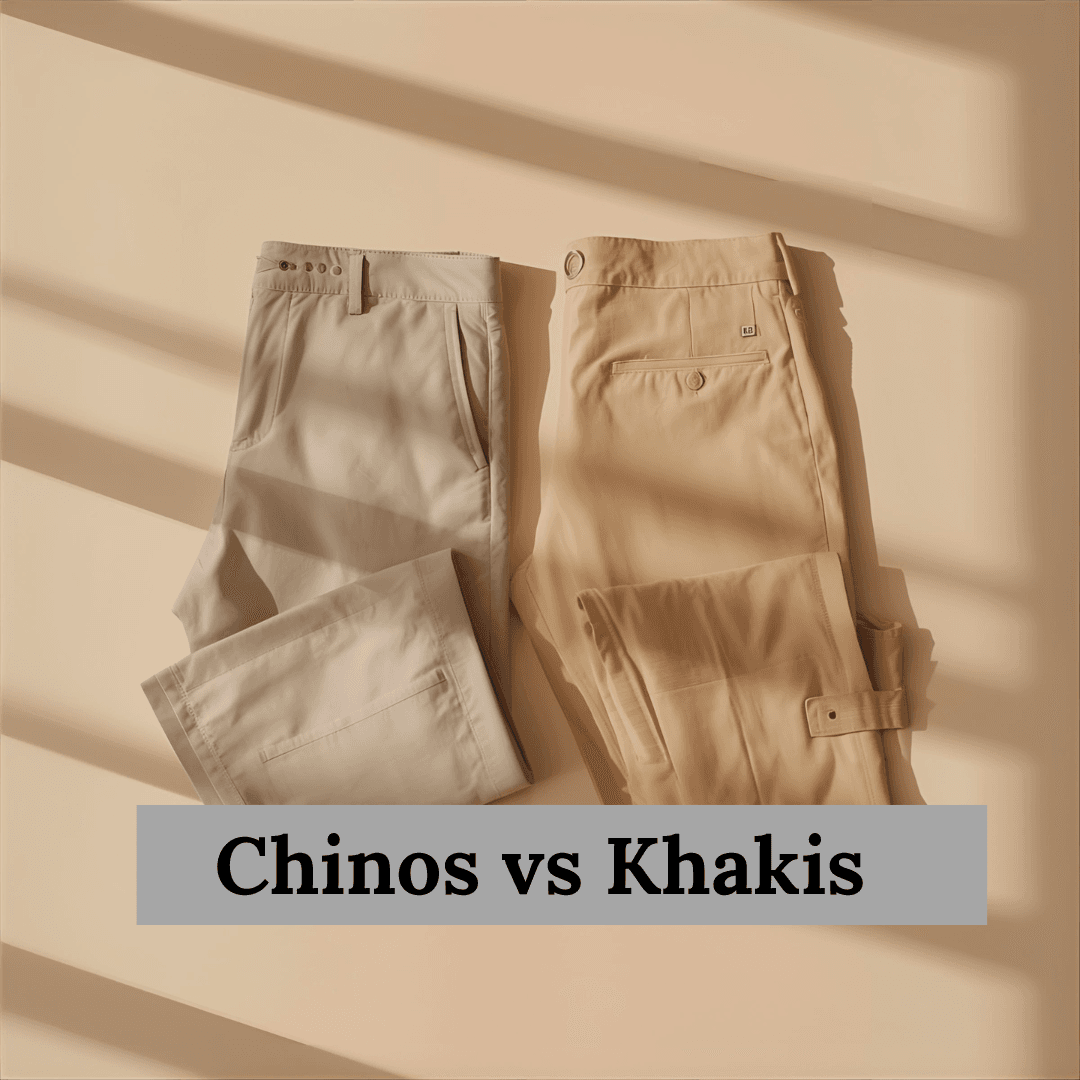




Leave a Reply